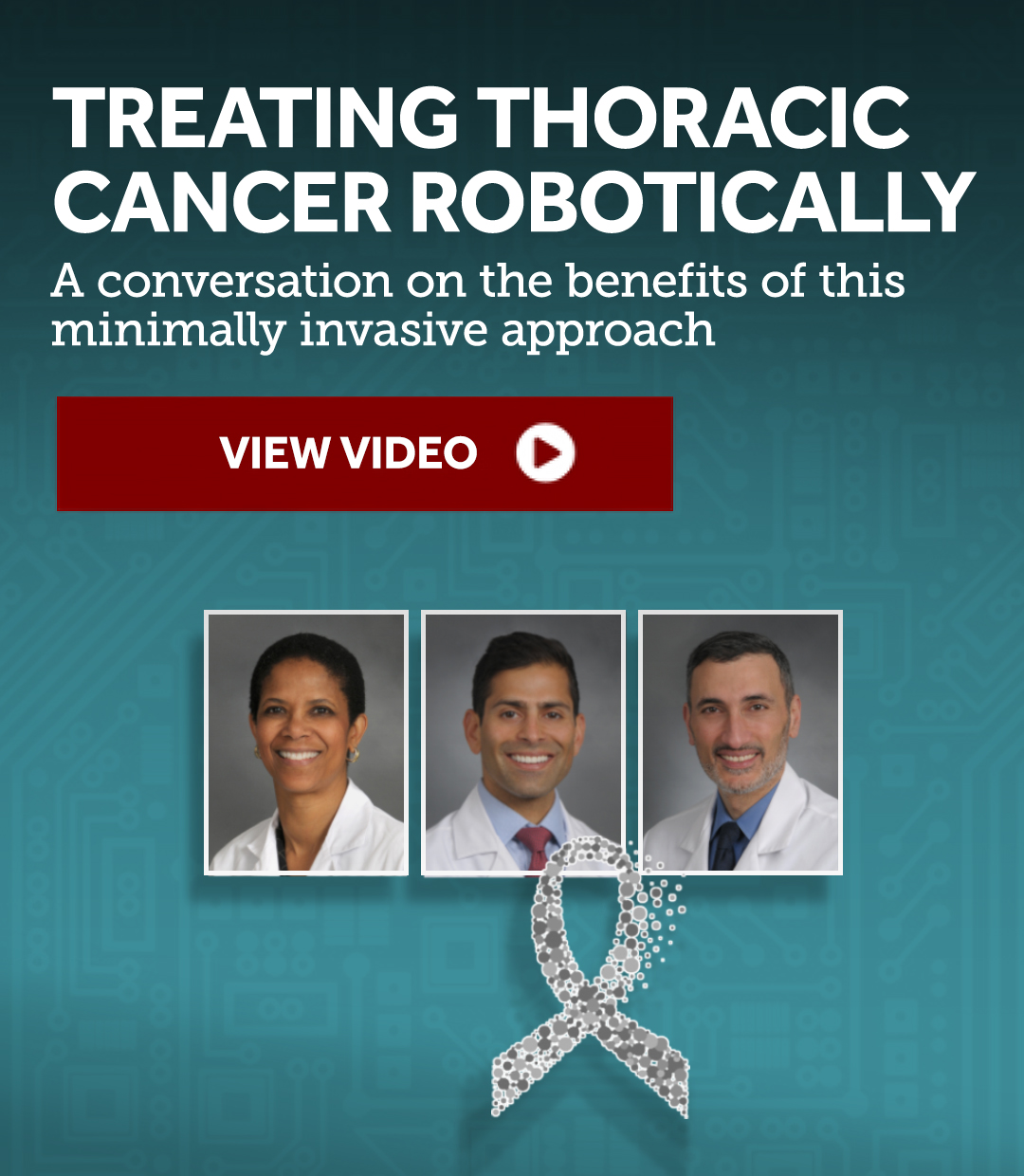Our Experts Answer Your Questions
Cardiothoracic Surgeon and Director of Robotic Thoracic Surgery, Stony Brook Heart Institute and Lung Cancer and Chest Disease Program, Stony Brook Cancer Center
Cardiothoracic Surgeon and Chair, Cardiothoracic Surgery, Stony Brook Heart Institute and Lung Cancer and Chest Disease Program, Stony Brook Cancer Center
Read her story >
What is robotic-assisted surgery?
The way we perform surgery keeps evolving and improving, especially when new technology is introduced. When we first started using the da Vinci® Xi™ robotic system, we mastered the new technique of using this tool as an extension of our hands and magnification of our vision. When performing robotic-assisted surgery, we dock the robot and are right next to you as we perform the surgery. The incisions are similar in size to thoracoscopic (video-assisted thoracic surgery or VATS) surgery, which uses a handheld camera and instruments through small holes in the body.
How is this used to treat lung cancer?
In early-stage lung cancer we are using this surgical technique for anatomic lung resection (removal). A lobectomy — considered the gold standard for lung cancer treatment — is the surgical removal of one of the lobes in the lung. The right lung has three lobes, and the left lung has two. Additionally, these lobes are broken down into segments, which allows us to perform smaller anatomic resections. We are also using robotic-assisted surgery for an esophagectomy, which is the removal of and reconstruction of the esophagus, when cancer is found. In addition, we are using this approach for tracheal disease, mediastinal masses and chest wall disease, such as thoracic outlet syndrome.
What are the advantages?
We’ve found there are a few advantages with this type of surgery. One is that we don’t have to spread the ribs as we do in open or traditional surgery, because we are using smaller incisions to access the tumor. This results in a faster recovery, which allows you to return to work or your normal activities sooner. Another advantage is that we can remove the lymph node packet — the area around the tumor — more precisely. This is partially due to the 10 times magnification of the robot in conjunction to the benefit of the wrist articulation.
How do I qualify for this approach?
You’re a candidate if you have an early-stage cancer and have had minimal operations in your chest. Ideally, you wouldn’t have received preoperative cancer therapy, such as chemotherapy, radiation, or immunotherapy. Even in a percent of these cases, there are modifications that can be done during surgery, so we can use the robotic system for part of the procedure. For late-stage cancer, it can be used to evaluate for lymph node invasion and palliation.
What would my recovery be like?
With the robotic technique we have found that there is a shorter hospital stay when comparing it to an open surgery. Bleeding is a risk, but not any higher than it is in any of the other approaches. For the lung resections, you’re likely to go home anywhere between day one and five. Pain substantially decreases upon discharge and removal of the chest tube. The timeframe to go back to your normal function, work and activities is usually between one to two weeks, except for exercising and lifting heavy objects. Those take a little longer.
What’s the Stony Brook difference?
We have immediate access to our colleagues who have expertise in a range of specialties. Collaborating with them in our multidisciplinary tumor board meeting, and when needed, is an asset that is unique to an academic medical center where the depth of knowledge is abundant. Also, there is strong administrative support to expand the robotic surgical program, so we can keep adding to our array of techniques that will benefit patients. That’s our mission — to expand and adapt our knowledge and skills, so we can offer optimal care.
For more information about diagnosing and treating lung cancer, call (631) SB-CANCER (722-2623) or the Lung Cancer and Chest DiseaseTeam at (631) 444-2981.


